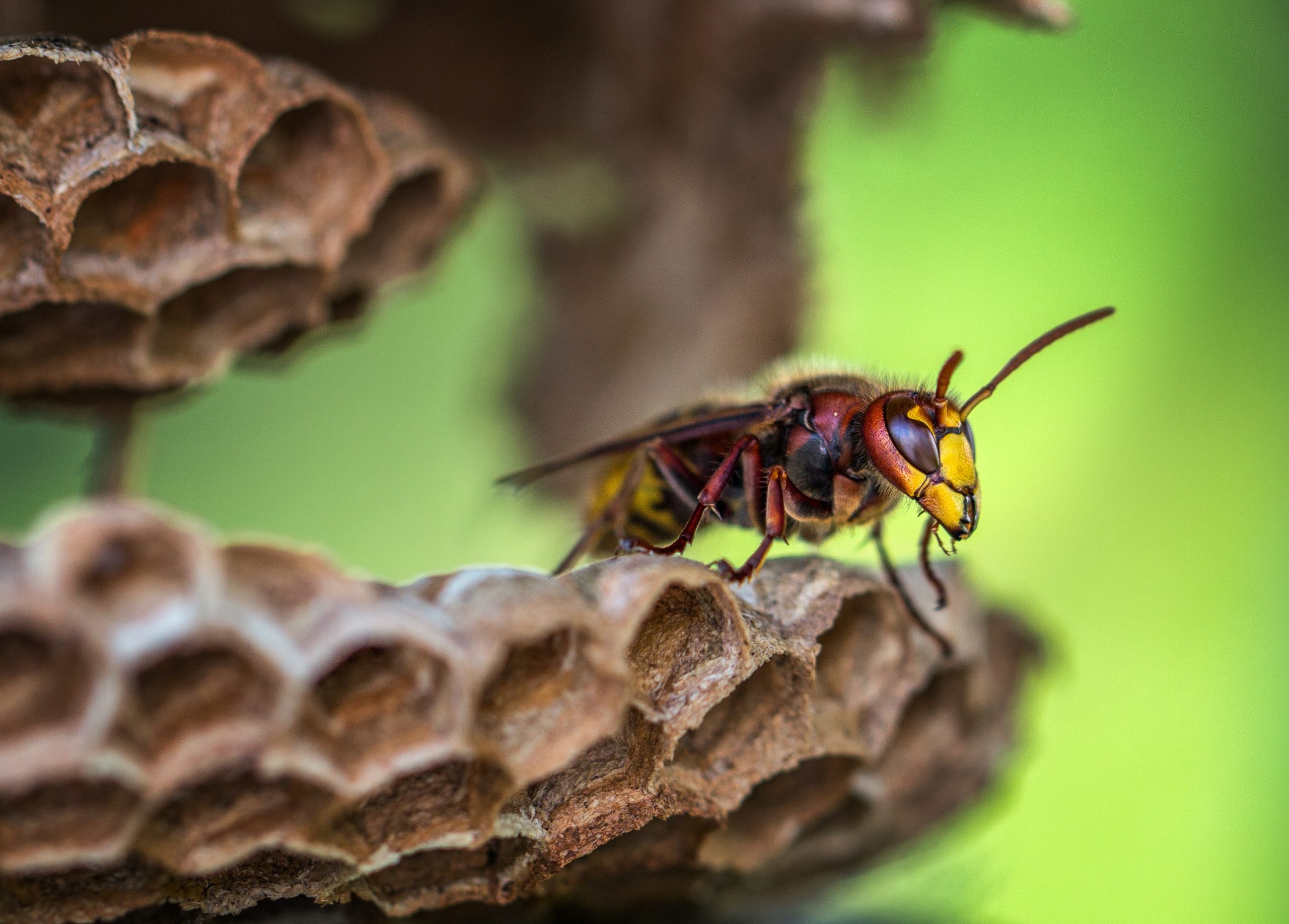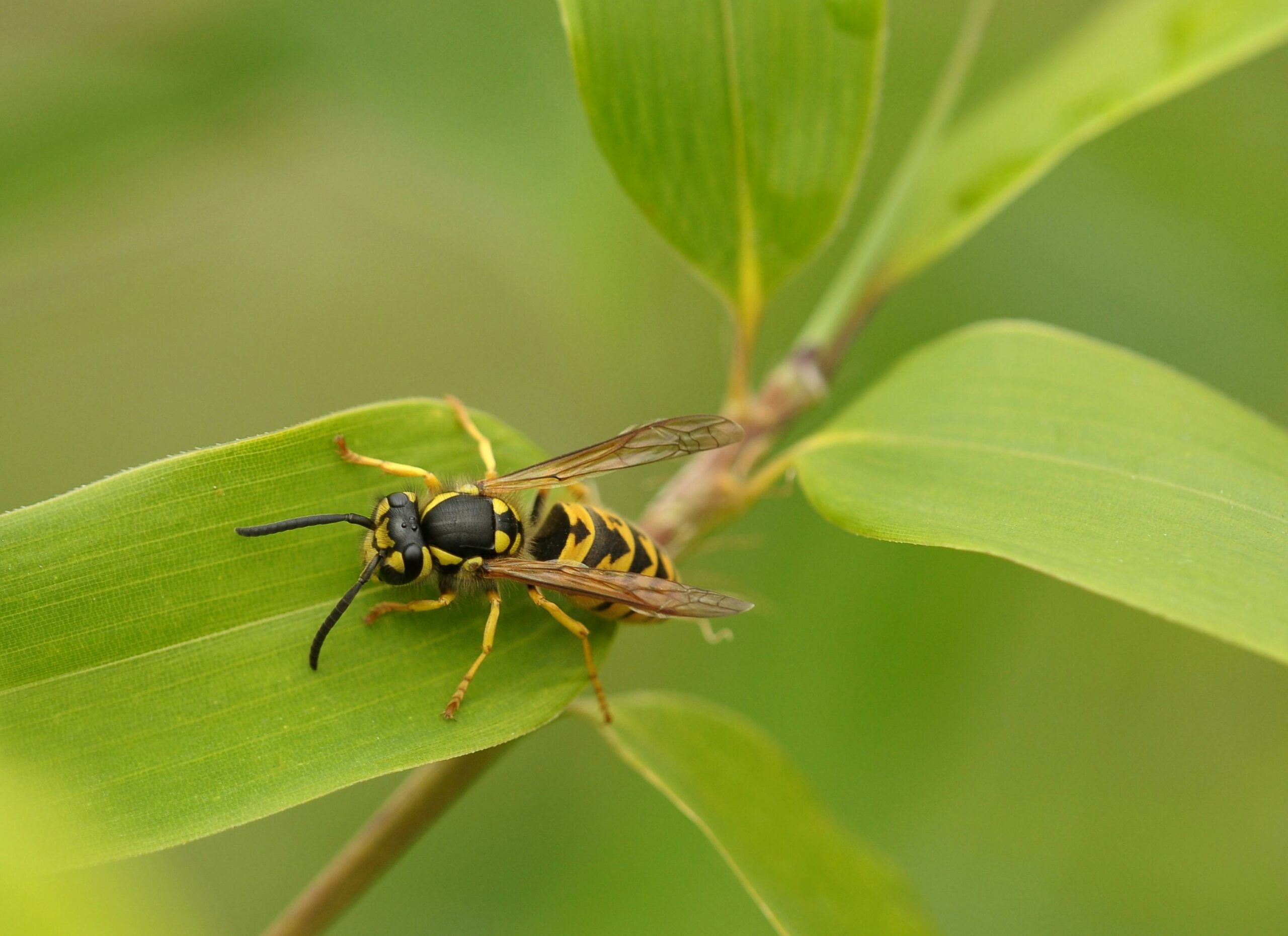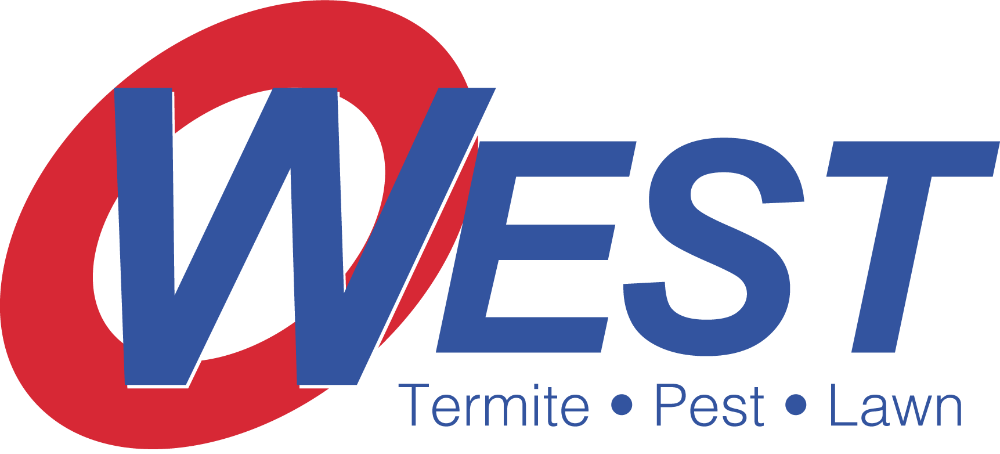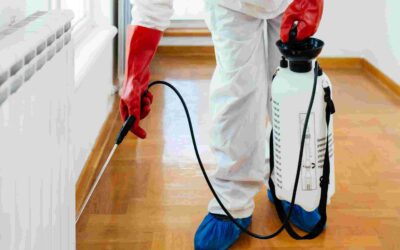
Signs of a Wasp Nest in Your Yard
It’s difficult to enjoy your outdoor spaces if you’re worried about avoiding wasp stings! These buzzing insects, while beneficial predators in the ecosystem, can become a nuisance around your yard, especially if they’ve built a nest nearby. Identifying signs of wasp nests is a must for maintaining a safe, enjoyable outdoor environment for you and your family.
Why Identifying Wasp Nests Matters
Wasp stings can be painful, and for some individuals, they can trigger allergic reactions. Even without allergies, multiple stings can be dangerous. A wasp nest on your property poses a threat, especially in high-traffic areas like patios, decks, or near pools.
Early detection of a wasp nest allows you to take action before the colony grows larger, increasing the risk of stings.
Different Types of Wasp Nests and Where to Find Them
Several wasp species build nests in yard, each with a distinct appearance and preferred location. Here’s a quick guide to some common types:
Paper Wasps: These wasps construct exposed, papery nests that resemble upside-down umbrellas. You’ll often find them attached to eaves, under roofs, or on the sides of sheds and garages.
Yellow Jackets: Yellow jackets build enclosed nests with a papery shell. They favor underground locations, like burrows in flower beds or under decks, or even in wall cavities within your house.
Bald-Faced Hornets: These large wasps create impressive, football-shaped nests with a grayish papery exterior. They prefer sheltered areas like tree branches, eaves, or even attics.
Mud Daubers: Unlike other wasps, mud daubers construct nests using mud or clay. They often attach their nests to sheltered surfaces like walls, under furniture, or even inside pool equipment sheds.

Key Signs of Wasp Activity Around Your Yard
Even if you haven’t spotted a nest itself, there are some telltale signs that wasps might be calling your yard home.
Increased Wasp Sightings: Notice a sudden surge in wasp activity around a particular area? This could indicate a nearby nest. Pay attention if wasps seem to be lingering around specific objects, or hovering in the air around a particular spot.
High Traffic Around Openings: If you see wasps repeatedly entering and exiting a hole in a wall, under the eaves, or in the ground, you’ve likely found the nest’s entrance.
Buzzing Sounds: Wasp nests often emit a constant buzzing noise, especially during peak activity periods. Take note of any areas where you hear a persistent hum.
Chewed Wood: Some wasp species, like hornets, chew on wood to create paper for their nests. If you notice chewed or damaged wooden structures around your yard, investigate further for signs of a nest nearby.
Inspecting Your Yard for Wasp Nests Safely
If you suspect a wasp nest on your property, it’s important to approach the situation cautiously.
When investigating, try to do so during periods when wasps are less active, like dawn or dusk. Be careful to avoid getting too close, and try to look for signs from a safe distance.
If you do end up getting close to a nest, dress appropriately– wear long sleeves, pants, and closed-toe shoes to minimize exposed skin.
Locating a wasp nest can be stressful for individuals who aren’t experienced– so please remember that if you feel threatened or unsure about the location of the nest, don’t hesitate to call a professional pest control service, who will be able to provide you with effective assistance.
Why Professional Wasp Nest Removal is Essential
While DIY wasp nest removal methods exist online, they can be dangerous and ineffective.
Professional pest control technicians have the training, protective gear, and appropriate insecticides to safely remove nests without putting you or your family at risk.
Professionals know how to locate and remove the entire nest, including hidden queens and larvae. This ensures a complete solution and prevents the colony from returning.
When choosing a pest control company, look for one that is licensed, insured, and reliable. For effective pest control service in Northwest Arkansas, Little Rock, Tulsa, Russellville, Hot Springs, Muskogee, Bartlesville, or River Valley, contact West Termite & Pest today!
Call your local West Termite location or fill out the form
on our contact page to schedule your inspection today!
More posts from West Termite, Pest & Lawn
Top 5 Spring Pests in Arkansas and How to Keep Them Out
Looking to protect your home this spring? Pest season in Arkansas starts as early as March, and if you’re not prepared, you could find yourself sharing your space with ants, termites, mosquitoes, spiders, or wasps. In this guide, we will cover the top five spring...
Spring Into Action: Preventing Termite Infestations in Arkansas Homes
Termite infestations are a serious concern for homeowners in Arkansas, especially during the spring when these pests become most active. Preventing termite infestations early can save you from expensive structural damage and long-term headaches. Termites thrive in the...
Early Spring Lawn Care Tips: How to Keep Your Arkansas Yard Healthy
A healthy lawn starts in early spring. If you want lush, green grass by summer, the groundwork begins as the weather warms and the soil softens. The right early spring lawn care routine is essential for homes in Arkansas, where fluctuating temperatures and humidity...



